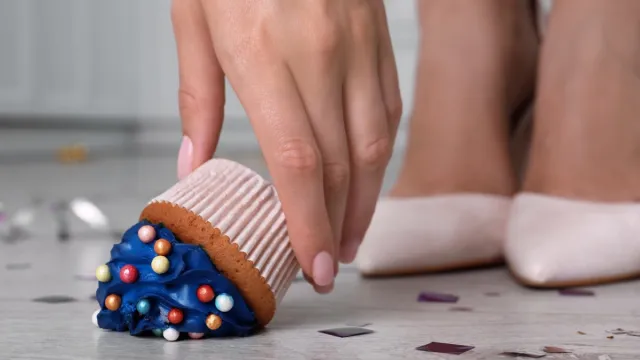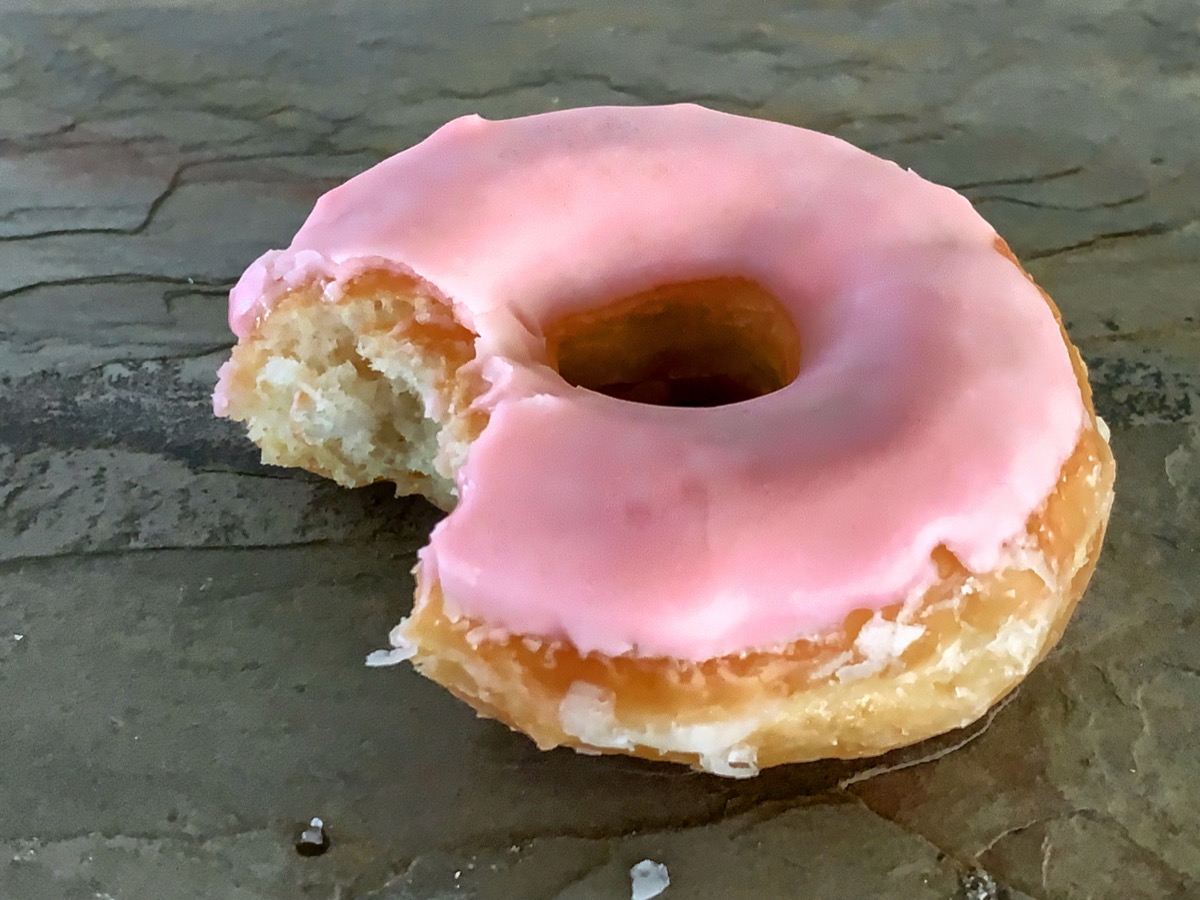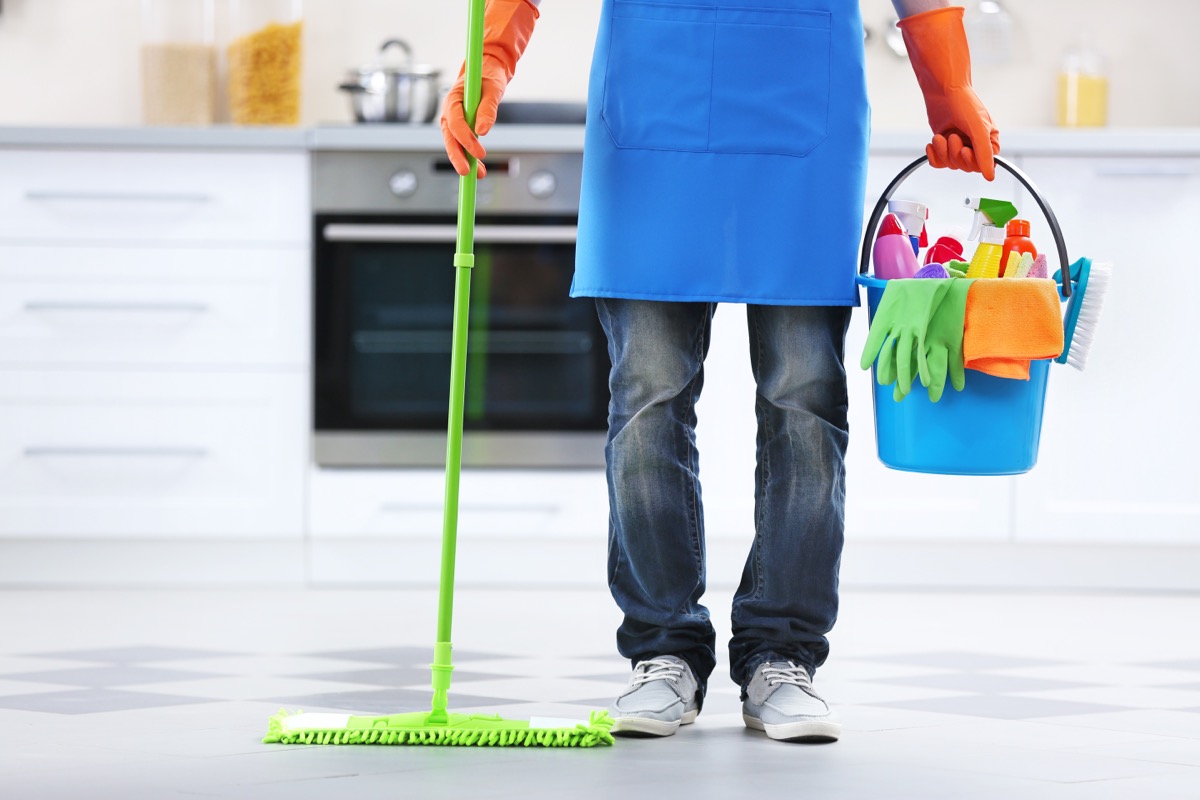What Happens If You Eat Something That Fell on the Floor—Is the 5-Second Rule Real?

If the “five-second rule” is to be believed, it’s OK to eat food that has fallen on the floor, as long as you pick it up within a few seconds. The theory is that by reacting quickly, you can beat bacteria to the punch, allowing you to enjoy your food before germs get the chance to contaminate it.
If that logic seems dubious to you, you’re not alone—many people reject the popular practice in the name of hygiene. That’s why we decided to go straight to the experts to find out what happens if you eat something that fell on the floor. Could it actually cause major harm to your gastrointestinal health? Read on to learn what doctors say about the five-second rule—before you grab that dropped cookie off the kitchen floor.
READ THIS NEXT: What Happens When You Don’t Wash Your Sheets Every Week, Doctors Say.
There is “no evidence” supporting the five-second rule.

According to Soma Mandal, MD, a board certified internist at Summit Health in Berkeley Heights, NJ, there is simply no credible evidence to support the five-second rule. She says that when food comes into contact with a contaminated surface, it can pick up harmful bacteria immediately—in less than a single second.
That’s why Mandal recommends erring on the side of caution any time food touches the ground. “It is generally not recommended to adhere to the five-second rule to determine whether food is safe to eat or not. If food does come into contact with a contaminated surface, it is best to discard than risk the chance of getting ill,” she tells Best Life.
READ THIS NEXT: The One Thing You Should Never Put in Your Washing Machine, Experts Warn.
Certain types of floors pose a greater risk.

Though Mandal discourages eating off the floor under all circumstances, she does note that some of the particular circumstances can affect just how contaminated your food has become. “Transference of bacteria can depend on how much contamination is present on the surface, type of surface, type of food, and the length of time the food remains on the surface,” she explains.
In fact, a 2007 study published in the Journal of Applied Microbiology tested which surfaces posed the greatest risk of contamination. The team infected various flooring types with salmonella, dropped pieces of bologna on the affected areas, then analyzed which pieces would be most dangerous to consume. “We did find the type of floor covering, carpet or tile, makes a difference in the amounts of bacteria transferred,” Paul Dawson, PhD, a professor in the Clemson University Department of Food, Nutrition and Packaging Sciences and lead author of the study, told Clemson News. “Carpet transferred less salmonella to the bologna,” he noted.
Similarly, the texture of the food you drop can also make a difference. Wet, porous foods are especially efficient at picking up bacteria and contaminants—and are herefore especially dangerous to eat off the floor.
Here’s what could happen if you eat off the floor.

The experts seem to agree: If you do make a habit of eating food that fell on the floor, your health may swiftly suffer the consequences. “If you eat food that has been dropped on the floor, your chances of getting sick are pretty high,” Dawson says.
Melissa Wasserman Baker, RDN, a registered dietician and nutritionist and the founder of Food Queries, says that symptoms of food-borne illnesses can be wide-ranging. “Depending on the type and amount of bacteria present, symptoms can range from mild stomach discomfort to more severe illness such as diarrhea, vomiting, fever, and dehydration,” she notes.
For more health news sent directly to your inbox, sign up for our daily newsletter.
Even a clean-looking floor can pose danger.

Even if your floor looks clean enough to eat off, Baker warns us not to be deceived. “A floor that looks clean may still harbor harmful bacteria, especially in high-traffic areas or where food is frequently prepared or consumed,” she says, adding that bacteria found on floors can include E. coli, Salmonella, and Listeria monocytogenes. Allergens, pathogens from animal or human waste, dirt, hair, and dust are also common culprits for contamination which may fly under the radar.
Though Baker says regular cleaning can help reduce the risk of contamination, you may ultimately replace the risk of ingesting dangerous bacteria with that of ingesting traces of cleaning chemicals. Neither is healthy, experts warn.
So, the next time you drop a piece of food on the floor, think twice before citing the five-second rule and eating it anyway. It may be inconvenient to forfeit your meal, but it’s worse to forfeit the whole day to a food-borne illness.